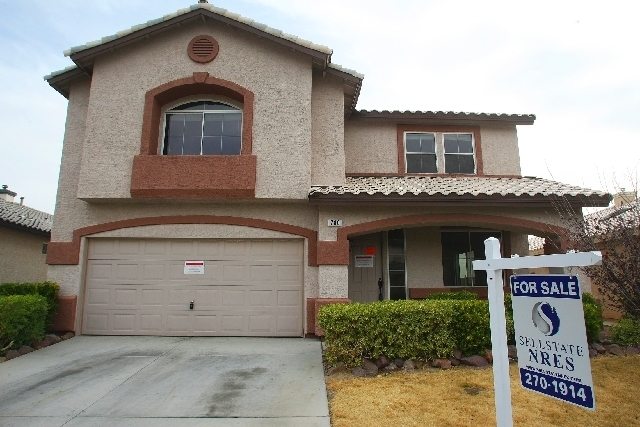Las Vegas dodges top 5 distress rankings — but likely only temporary

The semblance of recovery in Southern Nevada’s latest foreclosure data is like that replica of the Eiffel Tower on the Strip.
It only looks like the real thing.
The Las Vegas Valley in May managed to stay off every top-five list marking housing distress, according to Irvine, Calif.-based research firm RealtyTrac. From repossessions to investor purchases, metro areas in Michigan, Florida, Illinois and other states back East beat out Southern Nevada as the markets with the most troubles.
But that’s not because the valley has finally worked through its real estate woes.
Rather, it’s likely a temporary respite driven by an artificial drop in foreclosure starts.
“We’re not ready to declare Las Vegas back to normal,” RealtyTrac Vice President Daren Blomquist said. “The general trend in the market is away from distress, but the city has seen these somewhat erratic waves of foreclosure coming through. We think this may be a pause before another one of those waves rolls through.”
It’s shaping up to be a significant pause.
The market’s share of distressed sales fell by nearly half in May, to 13 percent of the market. That was down from 23.8 percent in May 2014.
Flint, Mich., ranked No. 1 for distressed sales, at 26 percent. The national average was 10.5 percent.
The share of local single-family homes being bought by big, institutional investors tumbled nearly 80 percent, to 1.9 percent, compared with 9 percent a year earlier.
Rockford, Ill., had the biggest share of institutional investors, 13.4 percent. Las Vegas even slipped below the U.S. average, which hit a 15-year low of 2.4 percent.
Investors have bailed on the Las Vegas market because double-digit percentage price gains in 2013 and 2014, combined with fewer foreclosure bargains, mean the market “is probably close to a price point where it doesn’t make sense to buy a lot of properties,” Blomquist said.
That could change in coming months, though: Foreclosures seem poised to pick back up, he said.
Nevada’s default laws went through several iterations in 2011 and 2013, which banks said complicated their ability to foreclose. As lenders have adjusted, foreclosure starts — first-time filings of notices of default — have picked up noticeably in 2015, Blomquist said. In a year or so, foreclosure completions could spike, too, though with prices improving and negative equity dropping, homeowners might have more options today for working out a sale before repossession.
If those foreclosures hit the market, Las Vegas might need investors to help with any surge in inventory, Blomquist said. That’s because it doesn’t appear traditional, mortgage-backed buyers have re-entered the local market in large enough numbers to close the investor gap.
Sitting on the sidelines are potential buyers who need to wait out a prior default, and consumers who owe more than their current home is worth. Las Vegas’ negative-equity rate was 28 percent in the first quarter, ranking No. 2 nationally behind only Lakeland, Fla.
Contact Jennifer Robison at jrobison@reviewjournal.com. Find her on Twitter @J_Robison1